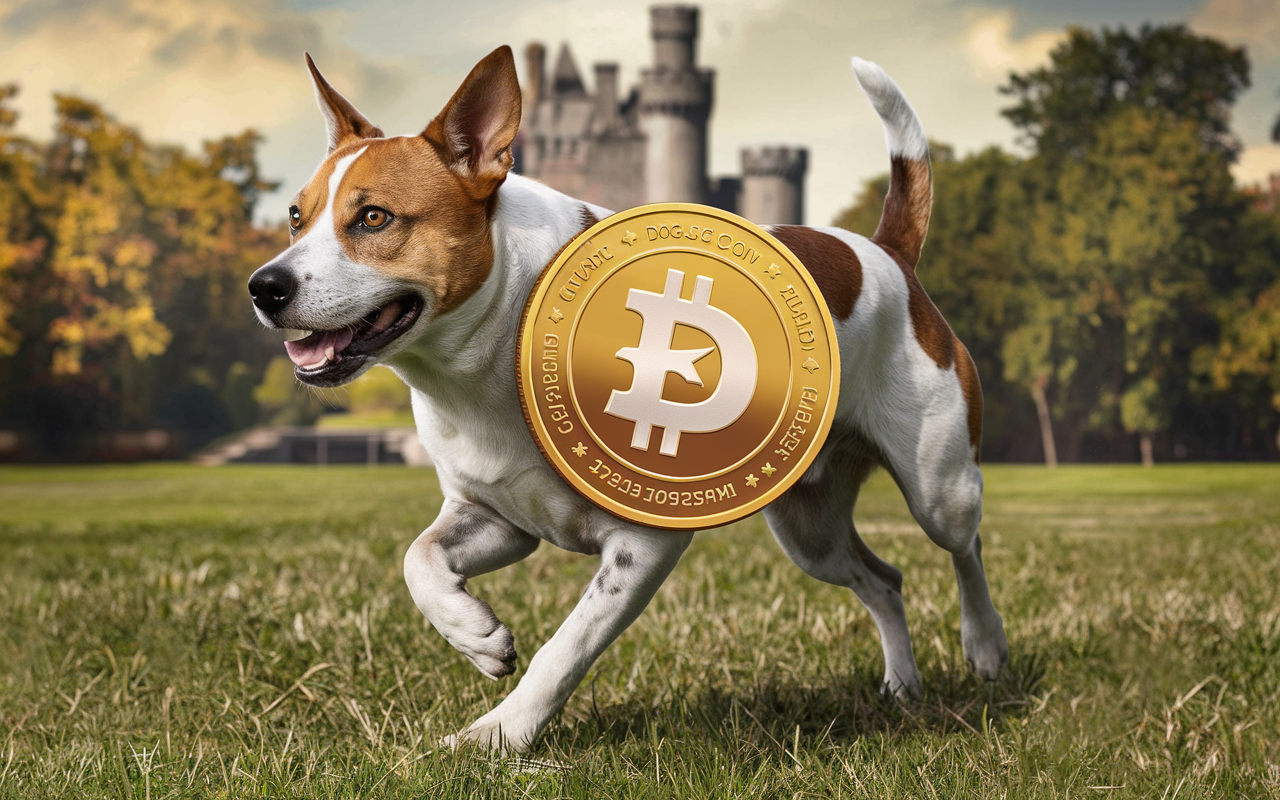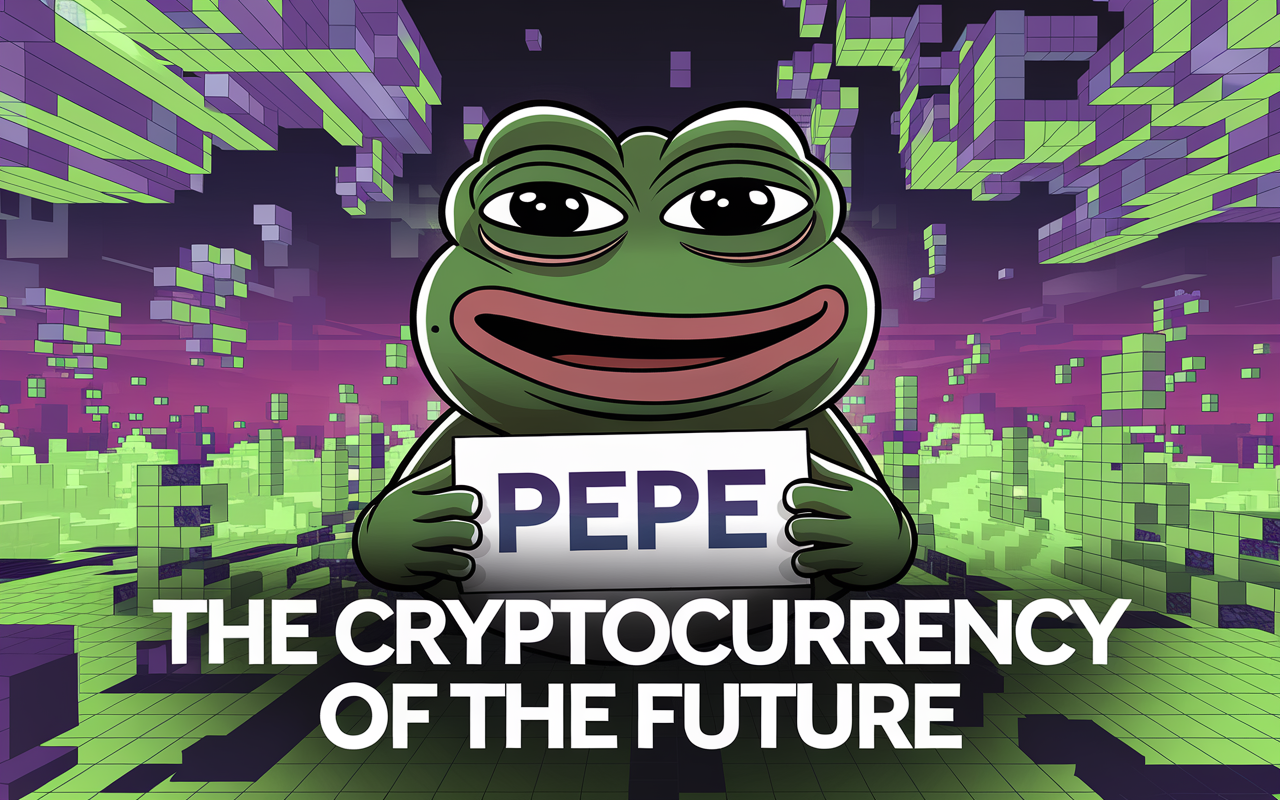Memecoins: The Rise, Success Stories, and Future Crypto News
In the huge world of cryptocurrency, memecoins stand out as a distinctive and typically controversial subcategory. Unlike Bitcoin or Ethereum, which purpose to revolutionize finance and decentralize systems, memecoins are sometimes created as jokes or social experiments. Despite their whimsical origins, many memecoins have garnered huge market capitalizations, producing immense wealth for early buyers. However, their market dynamics are characterised by excessive volatility and unpredictability, typically fueled by web tradition, movie star endorsements, and social media trends.
This detailed article explores the historical past and growth of essentially the most well-known memecoins: Dogecoin (DOGE), Shiba Inu (SHIB), PEPE, WiFi (WIF), BONK, FLOKI, and others. We’ll dive into their origins, the technological causes for his or her success, the teams of buyers who profited, what well-known buyers stated about them, and look at some of essentially the most paradoxical moments in memecoin historical past.
 1. The Birth of Dogecoin (DOGE): From Joke to a Billion-Dollar Currency
1. The Birth of Dogecoin (DOGE): From Joke to a Billion-Dollar Currency
1.1. The Creators: Billy Markus and Jackson Palmer
Dogecoin (DOGE) was the primary true memecoin, created as a joke in December 2013 by two software program engineers: Billy Markus and Jackson Palmer. Markus, from Portland, Oregon, needed to create a enjoyable and light-hearted cryptocurrency that might attain a broader demographic than Bitcoin. Palmer, primarily based in Australia, supplied the advertising push by tweeting about his plans to create Dogecoin, which shortly went viral.
- Start of Growth: Dogecoin’s early adoption was propelled by the enjoyable, approachable nature of the currency, which stood in stark distinction to the seriousness of Bitcoin. Initially, DOGE was primarily used for tipping content material creators on platforms like Reddit and Twitter. However, its group expanded quickly, and by 2014, DOGE had a market cap of over $60 million.
1.2. Technological Reasons for Success
Dogecoin was technically a fork of Litecoin (LTC), that means it borrowed Litecoin’s codebase. Its proof-of-work (PoW) consensus mechanism allowed for sooner block era (one block per minute), making transactions faster and cheaper than Bitcoin’s. This attracted customers who needed to ship and obtain small quantities of cryptocurrency with out paying high transaction charges.
- Inflationary Design: Unlike Bitcoin, which has a capped provide, Dogecoin is inflationary, with no most provide. This design, though criticized by some, has stored transaction charges low and ensured that Dogecoin stays a viable currency for on a regular basis transactions, versus being seen solely as a store of worth.
1.3. Investor Success Stories and Influential Endorsements
Early adopters of Dogecoin noticed huge returns as its price skyrocketed over time. Those who purchased DOGE in 2013-2014 for fractions of a cent discovered themselves sitting on giant fortunes by 2021, when DOGE hit an all-time high of $0.73 per coin.
- Elon Musk’s Endorsement: Perhaps essentially the most important think about Dogecoin’s explosive growth was Elon Musk, CEO of Tesla and SpaceX. Musk’s tweets about Dogecoin, together with one calling it the “people’s cryptocurrency,” brought on huge surges in DOGE’s price. Musk even declared himself the “Dogefather,” additional fueling the coin’s rise.
1.4. Paradoxical Moments in Dogecoin’s History
One of essentially the most paradoxical moments in Dogecoin’s historical past occurred in 2021, during the “Saturday Night Live” episode hosted by Elon Musk. Many buyers anticipated Musk to advertise Dogecoin during his look, resulting in a speculative frenzy and a sharp rise in price main up to the show. However, after Musk referred to Dogecoin as a “hustle,” the coin’s price plummeted, wiping out billions in market worth in a single day.

 2. Shiba Inu (SHIB): The “Dogecoin Killer” that Surpassed Expectations
2. Shiba Inu (SHIB): The “Dogecoin Killer” that Surpassed Expectations
2.1. The Anonymous Creator: “Ryoshi”
Shiba Inu (SHIB) was launched in August 2020 by an nameless creator often known as “Ryoshi.” Unlike Dogecoin, which was constructed on its own blockchain, SHIB is an ERC-20 token on the Ethereum community. It was marketed because the “Dogecoin killer,” aiming to capitalize on the growing recognition of dog-themed cryptocurrencies.
2.2. Technological Success and Ecosystem
Shiba Inu’s success stems from its strategic use of Ethereum’s blockchain, which allowed it to benefit from Ethereum’s decentralized purposes (dApps), sensible contracts, and liquidity swimming pools. SHIB is more than simply a meme token; its ecosystem contains different tokens like LEASH and BONE, and the ShibaSwap decentralized exchange (DEX), the place customers can stake their SHIB tokens for rewards.
- Decentralized Exchange (ShibaSwap): ShibaSwap allowed SHIB holders to stake their tokens, including an further layer of utility to the token. This function helped appeal to buyers who had been in search of more than simply speculative positive factors and needed to take part in decentralized finance (DeFi) actions.
2.3. SHIB’s Meteoric Rise and Investor Profiles
SHIB’s rise was nothing short of extraordinary. In just below a 12 months, it surged from near-zero worth to a peak market cap of over $41 billion in October 2021. Early buyers, particularly those that purchased tens of millions or billions of SHIB tokens for pennies, turned millionaires nearly in a single day.
- Retail Investors: SHIB attracted a wide selection of retail buyers, many of whom had been in search of the subsequent Dogecoin. Its low price per token made it interesting to small-scale buyers, who might buy giant quantities for little or no money.
- Vitalik Buterin’s Involvement: In an uncommon transfer, Ryoshi despatched 50% of SHIB’s complete provide to Ethereum co-founder Vitalik Buterin’s pockets. In May 2021, Buterin donated a significant slice of his SHIB holdings (price over $1 billion on the time) to the India Covid-Crypto Relief Fund, inflicting a short-term drop in SHIB’s price.
2.4. Paradoxical Cases in SHIB’s History
One of the strangest moments in SHIB’s historical past was when a pockets that had purchased round $8,000 price of SHIB in 2020 turned price over $5.7 billion by 2021. This pockets represented one of the best returns on investment in financial historical past, however its proprietor by no means moved or offered the tokens, leaving the large fortune untouched.

 3. PEPE Coin: Meme Power Without Utility
3. PEPE Coin: Meme Power Without Utility
3.1. Origins of PEPE Coin
PEPE coin was launched in 2021 as a homage to the notorious web meme “Pepe the Frog,” which had grow to be a image for varied online communities. Unlike Dogecoin or Shiba Inu, PEPE had no actual utility past being a memetic token. It was created purely for speculative functions, and its success relied closely on the recognition of the meme.
3.2. Technological Simplicity
PEPE is one other ERC-20 token constructed on Ethereum, offering little in phrases of innovation. Its creators deliberately prevented giving the token any actual use case, betting as a substitute on the facility of memes and the collective enthusiasm of web tradition to drive its worth.
3.3. The Investors Who Profited
PEPE attracted a area of interest viewers of buyers who had been accustomed to the “Pepe the Frog” meme and its related web tradition. Many of these buyers noticed PEPE as a joke however had been keen to take a small financial risk in exchange for the possibility to experience a viral wave.
- Small-Scale Investors: Unlike bigger cryptocurrencies, PEPE primarily attracted small-scale, speculative buyers who had been in search of fast positive factors. Many who invested early noticed their tokens surge in worth because the meme gained recognition.
3.4. Paradoxical Moments
One of essentially the most paradoxical elements of PEPE is that it managed to attain a multi-million greenback market cap regardless of having no inherent worth or utility. The token’s rise underscored how web tradition can affect financial markets in unpredictable methods, creating a bubble of worth the place none ought to logically exist.

 4. WiFi (WIF): A Memecoin with a DeFi Twist
4. WiFi (WIF): A Memecoin with a DeFi Twist
4.1. The Creation and Initial Hype
WiFi (WIF) was launched as a memecoin with a decentralized finance (DeFi) angle. Its creators, nameless builders energetic within the DeFi group, positioned WiFi as a token for yield farming, liquidity provision, and staking, hoping to mix the appeal of memecoins with the burgeoning DeFi market.
4.2. Technological Edge: DeFi Integration
WiFi was constructed on Ethereum, permitting it to work together seamlessly with DeFi protocols. The token allowed customers to take part in staking swimming pools and earn rewards within the kind of different cryptocurrencies. This gave WiFi a degree of utility that almost all different memecoins lacked, attracting buyers who needed to take benefit of each the memecoin hype and the growing DeFi space.
4.3. Investor Profiles and Success Stories
WiFi attracted two essential varieties of buyers: memecoin lovers and DeFi contributors. Early yield farmers who participated in WiFi’s liquidity swimming pools earned important returns on their staked tokens, whereas memecoin buyers benefited from the token’s initial price surge.
4.4. Paradoxical Cases
Despite its DeFi integration, WiFi remained largely speculative, and its price was susceptible to sudden crashes. One of the more paradoxical circumstances concerned an investor who earned important rewards by way of WiFi’s staking swimming pools, solely to lose a lot of their earnings in a subsequent price collapse attributable to a liquidity crunch.
 5. BONK: The Solana-Based Memecoin
5. BONK: The Solana-Based Memecoin
5.1. Origins and Creator Mystery
BONK was launched on the Solana blockchain in 2022, impressed by the success of different dog-themed tokens like SHIB and Dogecoin. Its creators stay nameless, and the token was launched with the intention of spreading community-wide rewards to Solana customers.
5.2. Technological Foundations
BONK was distinctive for being one of the primary main memecoins on the Solana community, which is understood for its high transaction speeds and low charges. Unlike many Ethereum-based memecoins, BONK customers benefited from Solana’s scalability, which allowed for fast and low-cost transactions even during durations of high community congestion.
5.3. Who Made Money on BONK?
The BONK airdrop in early 2023 was one of the most important in crypto historical past. Early contributors, together with Solana customers and builders, obtained free BONK tokens, many of which noticed important worth will increase. Those who offered early within the hype cycle made substantial earnings.
5.4. Paradoxical Moments in BONK’s History
Despite the initial hype, BONK’s worth plummeted as shortly because it rose, catching many latecomers off-guard. Some buyers who held onto their tokens, hoping for sustained growth, had been left with considerably devalued portfolios because the token’s price collapsed shortly after its initial spike.
 6. Floki Inu (FLOKI): The Viking-Inspired Meme Coin
6. Floki Inu (FLOKI): The Viking-Inspired Meme Coin
6.1. The Birth of FLOKI Inu
Named after Elon Musk’s Shiba Inu canine, Floki, FLOKI Inu was launched in 2021 by a group of nameless builders. FLOKI capitalized on the mixed recognition of Dogecoin, Shiba Inu, and Musk’s affect, branding itself as a meme token with real-world purposes.
6.2. Technological Aspects and Ecosystem
FLOKI Inu is constructed on each the Ethereum and Binance Smart Chain networks, offering buyers with cross-chain performance. The builders have additionally built-in real-world purposes into the FLOKI ecosystem, such because the Valhalla NFT metaverse and FlokiFi, a DeFi platform.
6.3. Investor Profiles and Success Stories
FLOKI Inu attracted a combine of retail buyers and meme lovers, many of whom had been drawn in by Elon Musk’s oblique connection to the token. Early consumers noticed spectacular returns because the token’s price surged following a advertising marketing campaign that included adverts in cities like London.
6.4. Paradoxical Moments
One of the more uncommon moments in FLOKI’s historical past occurred when the token’s price surged following a advertising stunt involving bodily billboards in main cities, together with London. While conventional advertising techniques are unusual within the crypto world, FLOKI’s group efficiently leveraged these campaigns to spice up the token’s visibility and market worth.

7. The Future of Memecoins: A Paradox in Motion
7.1. Can Memecoins Mature?
As the memecoin market continues to evolve, there’s a chance that it might grow to be more mature, integrating real-world utility and DeFi purposes. However, the paradoxical nature of memecoins—a mix of humor, hypothesis, and volatility—signifies that their future is unsure.
7.2. Conclusion: The Double-Edged Sword of Memecoins
Memecoins have created immense wealth for early buyers however have additionally left many latecomers with substantial losses. While some tokens, like SHIB and FLOKI, have began developing ecosystems that transcend memes, the market stays speculative and unpredictable.
As a testomony to the facility of web tradition and social media, memecoins will proceed to play a position within the cryptocurrency world—whether or not as financial bubbles or as tokens of real innovation.
The post Memecoins: The Rise, Success Stories, and Future of Cryptocurrency’s Most Paradoxical Phenomenon appeared first on CN Media.
Stay up to date with the newest trending crypto information! Visit our web site each day for the freshest Crypto information and content material, rigorously curated to keep you knowledgeable.


